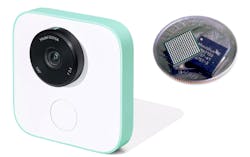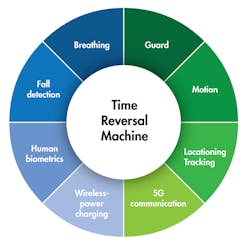Google Pixel Buds, Russian YouTube Ads, and Other Tech Talk
Believe it or not, getting space online isn’t as easy as it sounds when you want a bully pulpit, so here’s a mix of new tech stories and commentary I hope you find interesting. It’s sort of related, but the links are a bit tenuous.
To start, how many of you have been affected directly or indirectly by the Russian meddling in U.S. elections? If you didn’t raise your hand, you haven’t been following the news or are under the assumption that all your news sources are pristine, or at least reputable. Unfortunately, that’s not the case these days.
The latest Washington Post story, "Google uncovers Russian-bought ads on YouTube, Gmail and other platforms," highlights yet another Russian incursion that was very cheap, under $100,000. Yes, that’s cheap when talking about the amounts of money floating around a presidential election. It’s also only one instance of a growing list of influences that really have an unknown affect. Tracking how these might influence people who then influence people is probably going to wind up being a PhD thesis for more than half-a-dozen graduate students.
Google Clips
But first we transition to the recent announcement about Google Clips (Fig. 1). Clips is a tiny, autonomous camera that contains Intel’s Movidius neural-network accelerator for machine-learning and artificial-intelligence (AI) applications.
1. Google Clips is a compact camera (left) that integrates an Intel Movidius machine-learning chip.
The battery-operated camera is enabled by turning the lens. The machine-learning application then takes short video clips, which don’t include audio, based on what it thinks will be interesting videos. It does this by recognizing faces and objects in view and triggers when it sees something interesting. In theory, it’s learning from the images it sees; therefore, it will get better at capturing clips.
The videos can be downloaded wirelessly to a device like a smartphone or PC. The content is encrypted on the camera, so snarfing one will not reveal its captured video. This is more likely with the Clips than a camera, because a person will normally carry around the camera, while Clips is designed to be left hanging, literally, anywhere something interesting might be happening. That’s likely to be of concern but not unheard of, given the number of “hidden” cameras available on everything from toys to clock radios.
The Clips isn’t designed as a surveillance device in the usual sense, though it does wind up being such. It might be handy during a party as an extra camera, one that will also tend to go unnoticed. The key is the AI enhancement, since it’s not simply responding to motion or recognition of a single face.
Pixel Buds
Another recent Google announcement concerned Pixel Buds (Fig. 2). The Pixel Buds are essentially a set of Bluetooth ear buds that would normally be linked to a smartphone or similar device. They have a microphone so that they can be used as a wireless headset. However, the latest buzz is about a translation app that would run on the smartphone, essentially providing real-time language translation.
2. Google Pixel Buds are a set of Bluetooth earbuds that, when coupled with a smartphone, an app, and the cloud, can provide real-time (sort of) language translation.
At this point, that app doesn’t locally perform the translation; rather, it ships the audio up to the cloud to do the translation, which is shipped back for local playback. There’s a delay, as with any translation, since it needs to take an entire sentence into account and adjust to the target language’s syntax and semantics. Again, AI is being used, this time in the cloud.
Still, a very impressive process, although one that has been around for a while. It’s the implementation that’s more novel. It also leads to interesting interactions between a pair of users with Pixel Buds speaking in different languages.
Smart Speakers
Since we are talking about voice recognition, analysis, etc. we need to address the latest “smart speaker AI” like Amazon’s Alexa, Google’s Home, etc. I have used them and have devices here, although most are usually turned off given that I’m still a bit paranoid even about home networking. I just like a little more control over when something it’s doing work for me.
Security concerns aside, one major issue with these systems involves connectivity. The platforms, except for the Clips, require connections to the cloud or they don’t work. I recently had to use voice commands to program my Samsung Gear 3 watch because the timer wouldn’t work with the mechanical-setting approach. Worked great for the first few times. It didn’t work when the watch was not connected to the internet. It does this through my smartphone or Wi-Fi, and even I wind up in spots where neither is available.
Unfortunately, there’s nothing akin to something like Google Maps offline mode, where it can be instructed to download maps that might be needed in the near future. Anyway, I had to watch the clock instead of depending on the timer. I have since reset the watch and got it back to normal, but that’s another story.
Ok, we’re almost there.
Time Reversal Machine
3. Origin Wireless’ Time Reversal Machine uses mesh Wi-Fi channel-state-information (CSI) signal reflections to detect biometric information.
I also wanted to mention Origin Wireless and its Time Reversal Machine (Fig. 3). It’s a very odd name for a very interesting technology. Essentially, the company uses its “Smart Radio” mesh-network technology to track movement within the space covered by a group of wireless access points. The system utilizes the channel state information (CSI) used during the mesh-network configuration to detect reflected radio waves. There are hundreds of paths caused by reflections, which are normally filtered out to get the contents that contain the mesh configuration requests and responses. What Origin Wireless does is take advantage of these otherwise spurious signals.
Essentially the system takes a look at changes over time because the movement of an object in the space will affect the reflections. The system scans at 50 cycles/s, allowing it to do such things as detect breathing of multiple people in a room or determine that someone has fallen. Shades of the Star Trek Tricorder!
Disabled by WebExtensions
Now for a rant.
Firefox version 57 is set to disable all of the extensions I use as the platform transitions to WebExtensions-based extension support. A new “Find a replacement” feature has been added (Fig. 4), which is important, as one of the reasons for using Firefox in the past was the plethora of extensions. Many of the more popular, actively supported extensions have transitioned to WebExtensions, but many others have not and don’t plan to—and for me, that’s unfortunate.
4. As Firefox moves to version 57, users may need to find WebExtensions versions of their favorite extensions.
At this point, I’m checking out the alternatives, with Chrome near the top of the list. The challenge is finding replacements for my favorite extensions like DownThemAll, All-In-One Sidebar, and the Sage RSS reader. There are dozens more; I’ve taken lots of time collecting and configuring these extensions. In many instances, I haven’t found alternatives on either Firefox WebExtensions versions or on platforms like Chrome or Opera. I still have yet to find any browser, without using older ones, which lets me access my HTTPS-based devices that use the SSLv3 which cannot be upgraded.
One reason why Firefox justified this forced migration is that 40% of the users don’t use any extensions. They have supported both the old extension interface as well as the new WebExtensions at the same time for months, but it pales in comparison to other systems that have lasted for decades. The infamous Microsoft Windows comes to mind as well as IBM’s hardware platforms. Ever try to run a machine emulator on a virtual machine on some new hardware?
Putting the Pieces Together
So, how do I tie all this stuff together? With much difficulty, a little magic, and reader patience. Some common themes include privacy, AI, the internet, and support.
The latest neural-network craze has taken the world by storm unlike earlier AI bubbles. That’s because the applications are much more apparent to end users and the applications have been more practical in this space due to accelerators like Intel’s Movidius chip and the inclusion of cloud-based AI. Prior AI usage was almost as pervasive, but hidden in rule-based systems used in financial systems that would be unbeknownst to the average person.
The advantages of this latest application of technology can’t be avoided, but it involves a lot of personal, legal, and privacy issues. Will we see technology like Clips being rendered illegal because of recording issues, although the capability to do similar surveillance has been readily available for a decade. Of course, now the video clips can be collated and organized via AI-enabled applications handling millions of clips. On the other hand, this is already being done on platforms like Facebook and YouTube.
Finally, we have the issue of support. The latest technology is showing up in products at a fast and furious pace. Many of the new products are being superseded almost as quickly as they’re released, and even long-lived products like Firefox can render aspects unusable through a simple upgrade that’s often unavailable. Of course, even venerable platforms like Microsoft Windows often force users to migrate over the years, such as with the latest Windows 10.
Hopefully all of this makes sense, or at least exposes some new, interesting technology to you.
About the Author
William G. Wong
Senior Content Director - Electronic Design and Microwaves & RF
I am Editor of Electronic Design focusing on embedded, software, and systems. As Senior Content Director, I also manage Microwaves & RF and I work with a great team of editors to provide engineers, programmers, developers and technical managers with interesting and useful articles and videos on a regular basis. Check out our free newsletters to see the latest content.
You can send press releases for new products for possible coverage on the website. I am also interested in receiving contributed articles for publishing on our website. Use our template and send to me along with a signed release form.
Check out my blog, AltEmbedded on Electronic Design, as well as his latest articles on this site that are listed below.
You can visit my social media via these links:
- AltEmbedded on Electronic Design
- Bill Wong on Facebook
- @AltEmbedded on Twitter
- Bill Wong on LinkedIn
I earned a Bachelor of Electrical Engineering at the Georgia Institute of Technology and a Masters in Computer Science from Rutgers University. I still do a bit of programming using everything from C and C++ to Rust and Ada/SPARK. I do a bit of PHP programming for Drupal websites. I have posted a few Drupal modules.
I still get a hand on software and electronic hardware. Some of this can be found on our Kit Close-Up video series. You can also see me on many of our TechXchange Talk videos. I am interested in a range of projects from robotics to artificial intelligence.






